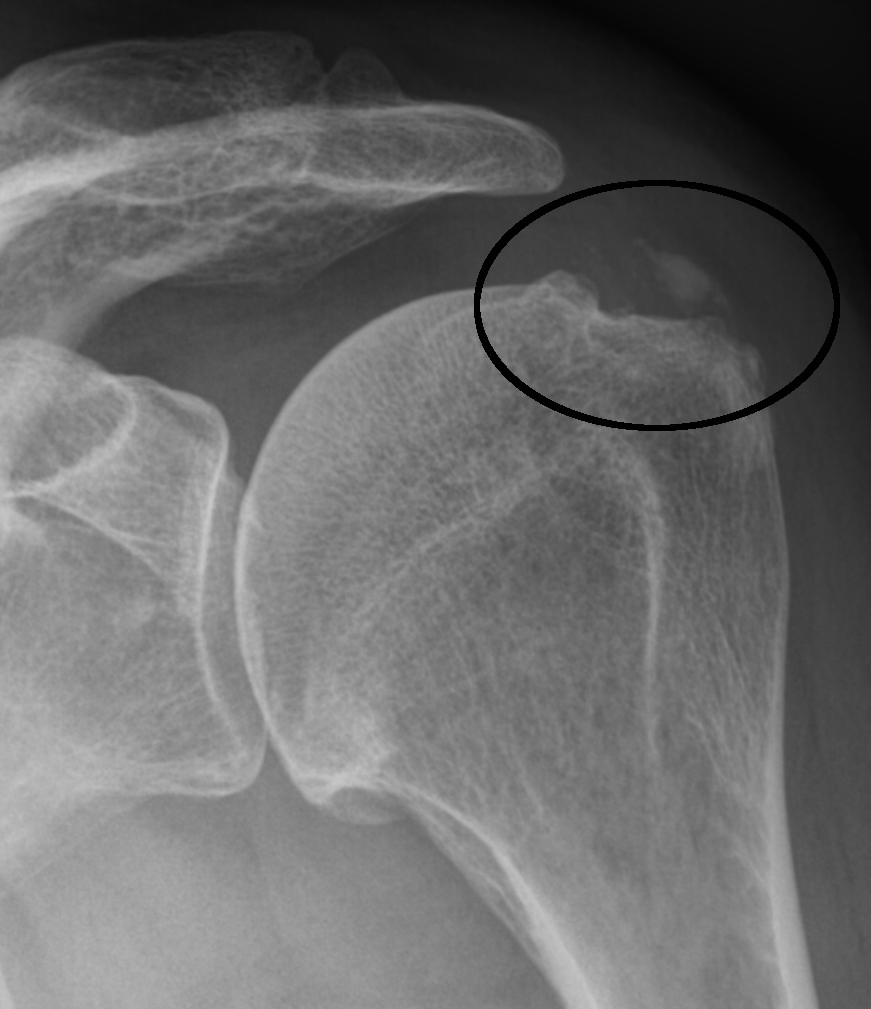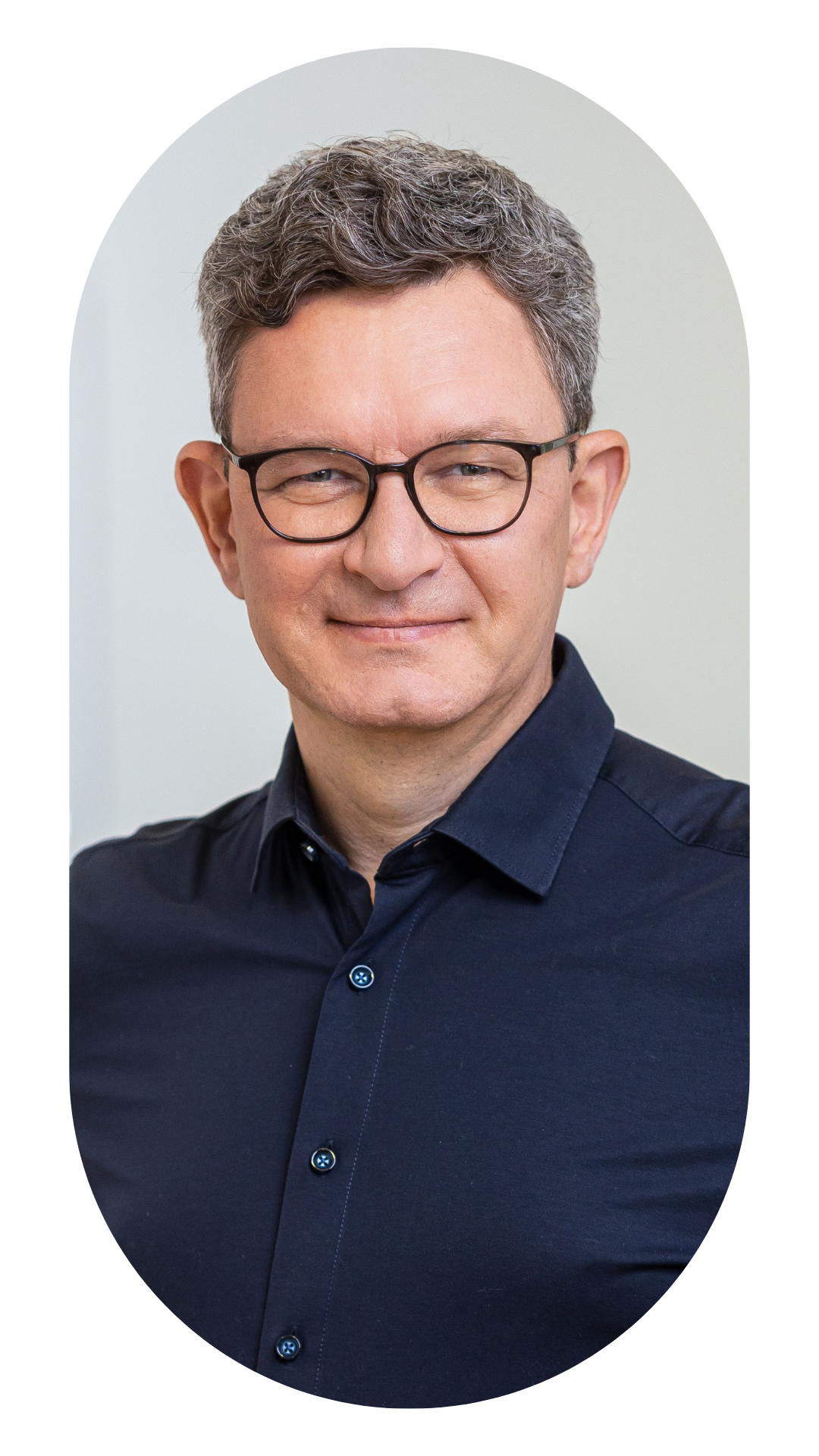Goodbye calcified shoulder: A personalised therapy concept using the most proven and innovative treatment methods for a better quality of life
Do you suffer from a painful calcified shoulder?
Is the pain so severe that it restricts your everyday life and leisure activities? You are not alone. This condition affects people of all ages and can severely impair quality of life. But there is hope! At our orthopaedic private practice Orthopassion, we offer you a holistic treatment concept that is individually tailored to you and is based on the synergistic effects of the most proven and various innovative therapeutic measures.
Overview: What is a calcified shoulder?
Calcified shoulder, also known as tendinosis calcarea, is a painful disease of the shoulder. It is caused by calcium deposits in the tendons of the rotator cuff, a muscle group that is responsible for the mobility of the shoulder.

Typical symptoms:
The calcific shoulder manifests itself through a series of characteristic symptoms that can significantly affect those affected in everyday life. The typical signs include pain that becomes noticeable both when moving the arm and when resting, especially at night. This pain can become so intense that it makes lifting the arm or everyday activities such as gripping, combing or dressing considerably more difficult.
In addition, calcific shoulder often leads to limited mobility of the shoulder joint, which can significantly reduce the quality of life of those affected. In addition to the direct complaints in the shoulder area, tension in the neck and shoulder girdle can often be observed. This usually results from the unconscious posture that those affected adopt due to the pain and can lead to additional complaints such as headaches, neck or back pain.
Causes and development
The development of calcific shoulder is a complex process that is still not fully understood. It is assumed that a variety of factors can contribute to the development of this disease. However, there is a consensus that a change in the metabolism of the tendon cells in the shoulder area plays a central role. These changes can lead to the deposition of calcium crystals in the tendons, particularly in the rotator cuff, resulting in inflammation, pain and limited mobility of the shoulder joint. One possible trigger is overloading the shoulder, which can be caused by repetitive movements or unaccustomed strain, leading to micro-injuries in the tendons. Muscular imbalances or postural disorders can also play a role by impairing the centring of the humeral head in the shoulder joint. This leads to repeated pinching of the tendon under the acromion, resulting in micro-injuries similar to overuse scenarios.
Circulatory disorders in the tendons can also contribute to calcium deposits, as reduced blood flow restricts the tendon's self-healing powers and therefore favours the deposition of calcium. In addition, metabolic disorders such as diabetes can increase the risk of a calcified shoulder, as they intensify general inflammatory processes in the body and can therefore also lead to problems in the shoulder tendon area.
Diagnosis: How is calcific shoulder diagnosed?
The diagnosis of calcific shoulder in our private orthopaedic practice is characterised by special care. We know that calcification in the shoulder does not always cause pain and vice versa. That is why our first step is to take a comprehensive medical history and carry out a thorough examination. This approach allows us to identify the true causes of your symptoms and ensure that our diagnosis is accurate.
State-of-the-art ultrasound equipment allows us to take a detailed look at the soft tissues of your shoulder and the tendons of the rotator cuff. In certain cases, we supplement these examinations with an MRI, which, although it cannot visualise the calcium, can show tendonitis, partial tears or bursitis in even greater detail than ultrasound.
In our practice, we take our time for you: we usually schedule an hour for the first appointment so that we can carry out a really thorough anamnesis and examination and start treatment straight away. We allow 30 minutes for subsequent treatment appointments so that we can always examine and treat you thoroughly, intensively and effectively.
A path to sustainable healing: the individualised combination of regenerative therapy methods with a synergistic effect
In our practice, we offer you a wide range of innovative treatment options that are tailored to the individual needs of each patient. Our focus is on the synergistic effect of different procedures to not only alleviate symptoms, but to address the causes of your complaints.
Here we present some of our innovative treatment methods:
-
Extracorporeal shock wave therapy (ESWT)
This non-invasive method stimulates cellular regeneration processes and promotes self-healing. High-energy sound pressure waves stimulate regenerative processes in the tissue, improve blood circulation and release anti-inflammatory substances.
Read more -
Cryotherapy
An effective method for treating pain, inflammation and swelling using hyperbaric cold therapy. The rapid cooling of the tissue stimulates lymphatic drainage and supports natural anti-inflammation and pain relief.
-
Laser therapy (HILT)
High Power Laser Therapy penetrates deep into the tissue, stimulates cell regeneration and relieves pain by activating the endorphinergic system. It is particularly effective in the treatment of tendon, muscle and joint complaints.
Read more -
High-energy magnetic field therapy
Electromagnetic fields activate cell metabolism, promote blood circulation and stabilise the membrane potential of the cells. This supports the healing of bone, muscle and joint diseases.
Read more -
Intensive physical therapy, radial pressure wave and fascia therapy
Combines various regenerative techniques with intensive muscle and fascia therapy to relieve stiffness and improve mobility.
-
Osteopathy
Considers the body as a whole and treats functional disorders that can cause discomfort in distant parts of the body. The gentle techniques promote self-healing powers and support sustainable recovery.
Read more -
Regenerative injection therapy
Utilises the healing powers of the patient's own blood to reduce inflammation and support tissue regeneration. By injecting platelet-rich plasma, growth factors are transported directly to the damaged areas, which accelerates healing.
-
Tenex treatment
In severe cases where conservative therapies are not sufficient, this minimally invasive intervention can be an option to remove even severely altered tissue. It is an innovative, minimally invasive technique, specially developed for patients for whom conventional therapies have not achieved the desired results. A special ultrasound needle is used to gently remove damaged tissue or calcium deposits in tendons while sparing healthy tissue. The Tenex treatment therefore offers an elegant, minimally invasive alternative to open or arthroscopic surgical procedures and contributes to a faster return to everyday life and the resumption of sporting activities.
Read more
Why cortisone is not an option for us:
Although cortisone injections can relieve pain in the short term, we refrain from using cortisone injections in our practice due to the considerable long-term disadvantages. Not only can they weaken the tendon structure and thus significantly increase the risk of tears, they can also reduce the essential blood supply to the tendons, resulting in delayed healing. There is also a risk that cortisone has a negative effect on cartilage metabolism and therefore promotes the development or progression of osteoarthritis. The treatment also harbours the risk of blood pressure crises or blood sugar imbalances. In view of these risks, we prioritise alternative, safer and regenerative therapeutic approaches that are geared towards the long-term health and well-being of our patients without risking the aforementioned cortisone side effects.
Self-help, self-exercises and prevention
Self-exercises are essential for shoulder health in order to maintain mobility and relax the tissue. Movements should be performed in a low-pain range to avoid pain provocation. Regular sporting activity, combined with a specific exercise programme, supports prevention and helps to compensate for occupational or sporting strain. In acute phases of pain, applying an ice pack or taking painkillers for a few days can provide relief.
Contact and appointments
Make an appointment at our practice now to have your calcific shoulder treated by our experienced doctors. We will help you to overcome your pain and regain your quality of life.
Book a consultation appointment now!
Quick, uncomplicated and easy to your appointment
FAQ
-
Can a calcified shoulder heal on its own?
Yes, a calcified shoulder can heal on its own. In some cases, the calcium deposits in the shoulder dissolve on their own after a while. It is important to understand that the pain associated with a calcific shoulder is often not caused directly by the calcium deposits. Rather, it is the inflammatory reactions of the tendons that cause the pain. It is therefore possible for the shoulder to become completely pain-free again, even if calcium deposits remain present. For this reason, it is particularly important to treat not only the calcification in the tendon locally, but also the entire shoulder joint, including the surrounding muscle and fascia structures.
-
Can the calcium in the shoulder dissolve again?
In principle, yes, as part of the healing of the chronic inflammation of the lakes Comma However, it is not a prerequisite for becoming pain-free again that I have to dissolve all the calcification Comma Rather, it is crucial for freedom from pain that the inflammatory stimulus in the tendon is reduced and normal shoulder joint function is restored.
-
Is swimming good for calcific shoulder?
Swimming is a sport that (with good technique) is very well suited to mobilising the shoulder joint and especially the connection of the shoulder blade. However, if you have a calcified shoulder, you should avoid training into the pain, regardless of the activity or sport. So if you can swim almost pain-free, then do plenty of swimming and pay particular attention to the gliding phase during which you can extend your arm a little to improve mobilisation of the shoulder blade connection.
-
How long do you have pain with a calcific shoulder?
This varies greatly and can range from a few weeks to many months. It is particularly important to start effective therapy early to avoid chronification.
Author and expertise
Our practice is run by Dr Raul Borgmann, a renowned expert in the field of regenerative orthopaedics, osteopathy and movement medicine. With years of experience and a deep understanding of the complex interrelationships of the musculoskeletal system, Dr Borgmann and the team at Orthopassion's private orthopaedic-osteopathic practice guarantee treatment at the highest level.
Further information:
-
Calcified shoulder article by Dr Borgmann on Orthinform.de
-
Shock wave therapy for calcific tendinitis of the shoulder: a prospective clinical study with two-year follow-up
The study demonstrates that shockwave therapy is a safe and effective treatment for patients with calcific shoulder by providing significant improvements without invasive procedures. Over a two-year period, sustained positive results were observed in terms of pain reduction and improvement in shoulder function.
-
Focused, radial and combined shock wave therapy in treatment of calcific shoulder tendinopathy
The results showed clinical, functional and sonographic improvements in all groups. The best treatment for calcific tendinopathy of the shoulder appears to be combined focussed and radial ESWT compared to single interventions.
-
Effects of high-energy extracorporeal shock wave therapy on pain, functional limitations, quality of life and ultrasonographic changes in patients with calcified rotator cuff tendinopathy
Conclusion: High-energy shock wave therapy has been shown to be effective and is therefore strongly recommended for the treatment of calcified rotator cuff tendinopathy, as it improves pain and functionality, increases the quality of life of participants and reduces the size of calcifications. Shockwave therapy has been shown to be superior to routine physiotherapy.
-
Ultrasound-guided percutaneous needle tenotomy with the Tenex system for refractory lateral epicondylitis; short- and long-term efficacy and influencing factors
Ultrasound-guided percutaneous needle tenotomy (USPNT) with the Tenex system significantly improves symptoms and function in patients with lateral epicondylitis (tennis elbow), even at long-term follow-up of up to 3 years. No complications such as tendon tears or infections were observed.
Let us accompany you on the way to a pain-free shoulder!
Your Orthopassion team


